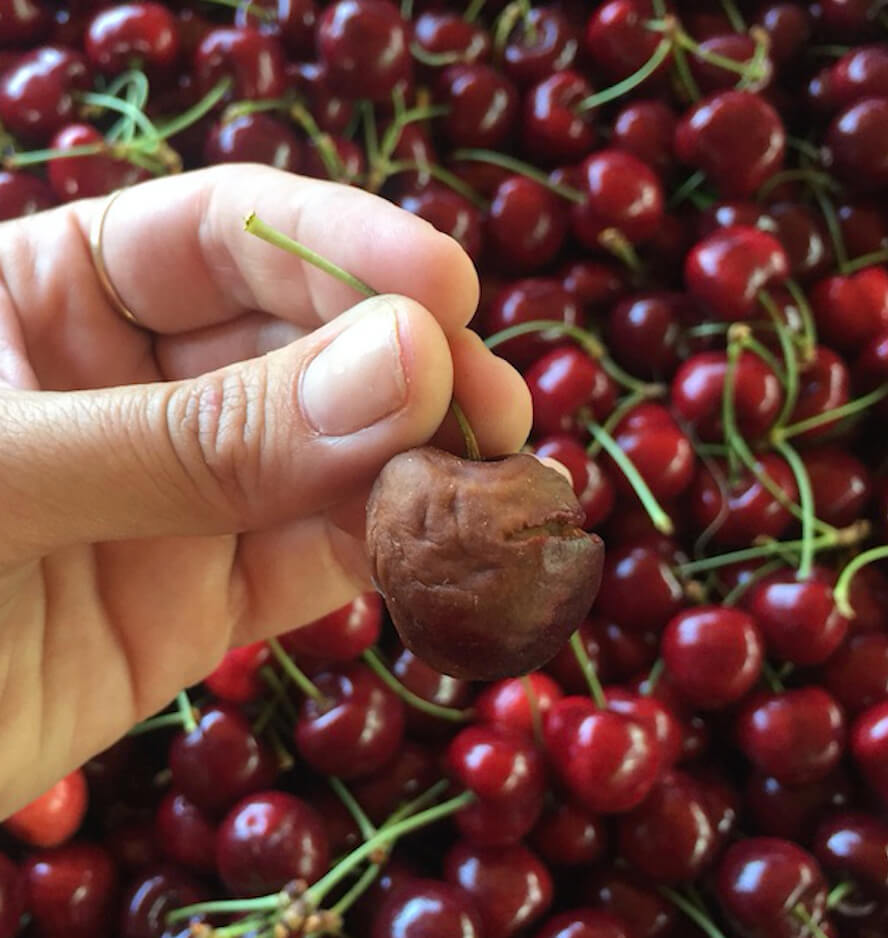
Brown Rot in Cherries (Monilinia fructicola)
Why is it a problem?
Brown rot in cherries (Monilinia fructicola) is a fungus that manifests itself on the tissue of soft fruits, including cherry trees. Brown rot in cherry trees first appears as a areas of brown discoloration, often in circular shapes. Development of brown rot on the fruit can lead to areas of grey spores which appear as raised on the fruit surface. Any presence of brown rot on cherries not only damages the fruit on which it grows, but can quickly lead to contamination of entire boxes of packaged cherries at harvest, where fruit infected with brown rot can quickly begin to rot and spread to neighbouring fruit in the box or bin.
Where does Brown Rot come from?
Brown rot in cherries overwinters as on mummified fruit (fruit left unpicked or left behind from the previous year's harvest), or in cankers on the trees themselves. Under wet conditions, these spores can be released into the orchard environment and settle on new and developing tissue. Brown rot can often be overlooked when fruit is processed at the packinghouse when the fruit is washed and cooled, but this unfortunately does not remove the fungus from the fruit itself, and once packaged the brown rot spores will continue to proliferate inside packed fruit boxes.
How the BC DAS system can help: Keeping you Informed + Equipped
The BC Das system allows growers to be informed about the current risk of brown rot in the growers' specific geographic location. Using information on temperature and wetness events, the BC DAS system provides the grower with up to date information regarding potential risks for brown rot, and crucial timings for protection action. In order for the BC DAS system to be most accurate, the grower must also monitor conditions in their own orchard in order to be fully informed about brown rot risk throughout the growing season and avoid loss.
The DAS Spray Guide offers different spray options, rates and timings, allowing growers to plan their sprays for coverage, as well as allowing the grower to select for product options currently registered for both conventional and organic use. By following along on the BC DAS model, the grower will have timely information and knowledge of the tools currently available to protect against brown rot in their orchard.
Still interested in finding out more? Check out our BC DAS Cherry Brown Rot model video on YouTube to connect horticultural knowledge from the field with the online DAS program:
